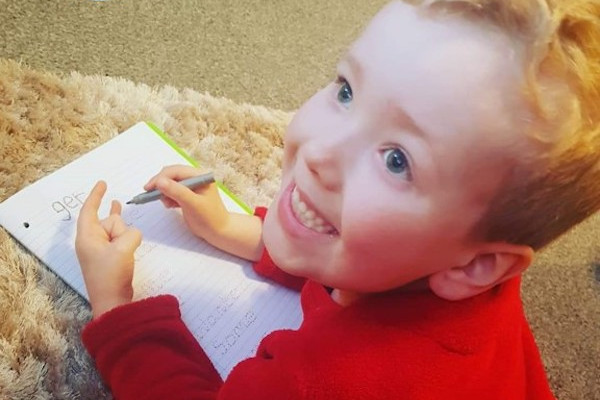
by Kellie Thompson
Earlier this month we learned of the tragic death of six-year-old Arthur Labinjo-Hughes, who died on 16 June 2020 at the hands of his stepmother Emma Tustin and father Thomas Hughes, who were convicted of murder and manslaughter for 29 and 21 years respectively.
With emotive recorded footage being publicly circulated of the young boy’s distress and photographs of bruising to his body shortly before his death, with information that Arthur had sustained 130 injuries to his body when he was admitted to hospital and an ‘unsurvivable’ brain injury, it is no wonder his case has received the attention it has.
Media reports shared how a number of referrals were made to the police and children’s services by concerned family members two months prior to Arthur’s death in April 2020. But at the time both agencies concluded there were no safeguarding concerns nor any criminality – a pattern now largely mirrored in the equally heartbreaking case of Star Hobson, murdered at the hands of her mother’s partner in September 2020.
We now await findings from a national inquiry into the circumstances surrounding Arthur’s death, led by the Child Safeguarding Practice Review Panel, as well as a joint targeted area inspection into agencies in Solihull, headed up by Ofsted. I anticipate, albeit speculatively, that the ‘missed opportunities’ that will be identified will have already been cited many times before – one I would expect to see being information sharing between social workers and other professionals.
I fear easy comparisons being made between the recent horrific cases and previous high-profile inquiries, such as those into the deaths of eight-year-old Victoria Climbié in 2000, or 17-month-old Peter Connelly in 2007.
‘Performing a safeguarding role based on a partial picture’
Yet the contexts of practice between cases are far from the same. Already we see the beginnings of the vilification of social workers, castigated as not doing their job ‘properly’, without fully acknowledging the impact of the Covid-19 pandemic on child protection practice and, consequently, on the decisions made from information received.
On social media, messages perpetuated by tabloid newspapers have been shared and retold by the outraged public as a vehicle for demanding justice. Of course, there are questions that must be answered – but the lambasting of social workers and search for blame will not prove fruitful in the long term.
Rather than be a platform in learning lessons, I fear it will merely prompt questions of competency instead of promoting more sophisticated feedback loops for practice. These would involve gaining an understanding of and responding to the complexities of day-to-day social work practice during Covid.
Related reading
Chief social workers and Zahawi condemn abuse of practitioners in wake of Arthur murder
Covid has been an unprecedented time for all; shrouded by uncertainty and emotion not least for social workers and the tension between professional life and family life.
From my most recent research earlier this year on information sharing and multi-agency working during Covid, children’s social workers described how social distancing measures created by three national lockdowns meant the work of safeguarding children became temporarily redefined as a necessary response to the pandemic.
For social workers it was to ‘keep calm and carry on’ even though they were working with what can be described as a diluted network of professionals (such as teachers or health visitors) who were for the most part not seeing children. If children were seen this happened often via WhatsApp or Microsoft Teams – which changed the context in which information was received, interpreted, translated or just left unsaid.
While these technologies offered opportunities to remain in contact with children, they created challenges – as to what could be said by children and the risks this might cause, by being at home with parents, what social workers were able to see and experience through the senses – and a different context in which information was interpreted and translated.
There is a received idea that having a ‘full picture’, via all professionals working together and sharing information, is central for children to be adequately protected. But during Covid, social workers were performing the safeguarding role on a very partial picture at best.
‘We need to understand what information was unavailable or missing’
The review into Arthur’s case needs to go beyond asking what information was known by children’s services or the police at the time. We need to understand what information was unavailable or missing in trying to make sense of how pieces of the jigsaw were connected, or not, in trying to understand what was happening in Arthur’s life before his tragic death.
We need to know how visible Arthur was to professionals and those outside of the immediate family when the first national lockdown had come into force. When information was shared with children’s services, we were less than a month into that first lockdown.
Interrogating the complexity of sensemaking in the context of practice during Covid is key to understanding what might have gone wrong in Arthur’s case. While pictures were seen of bruising to Arthur’s body, it is not only the bruises themselves that count but the sense made of the bruises and other information available, including the accounts offered by Emma Tustin and the father Thomas Hughes as to how the bruising occurred.
From what I understand an explanation of ‘play fighting’ was offered by Emma Tustin and Arthur’s father – might this have been considered a plausible explanation for a six year old boy?
We have seen this before in the case of Peter Connelly when Tracy Connelly, Peter’s mother, described Peter as having ‘behavioural issues’ – this categorisation of the case was confirmed when the social worker saw Peter banging his head against a wall, while other important signals such as the deterioration of Peter became lost information. Research has shown that it is these combined that led to a strong – but very wrong – hypothesis that led to tragic consequences.
How referrals are received and rationalised determines how cases are categorised at children’s services front doors. This has implications for what is considered information and the connections that are made as to whether the referral signifies child maltreatment or not.
Thus, in the review of Arthur’s case, it is essential to understand the sensemaking of the social workers involved in the practice context of Covid. This will require not just asking what information was known by children’s services at the time, but rather what information was unavailable or missing in trying to make sense of the picture that was created in determining how Arthur’s case was understood and the strong hypothesis that took hold.
Author of: Strengthening child protection: Information sharing in multi-agency settings. Bristol: Policy Press.




 Bournemouth, Christchurch and Poole
Bournemouth, Christchurch and Poole  Hampshire County Council
Hampshire County Council  Lincolnshire County Council
Lincolnshire County Council  Norfolk County Council
Norfolk County Council  Northamptonshire Children’s Trust
Northamptonshire Children’s Trust  South Gloucestershire Council
South Gloucestershire Council  Wiltshire Council
Wiltshire Council  Wokingham Borough Council
Wokingham Borough Council  Children and young people with SEND are ‘valued and prioritised’ in Wiltshire, find inspectors
Children and young people with SEND are ‘valued and prioritised’ in Wiltshire, find inspectors  How specialist refugee teams benefit young people and social workers
How specialist refugee teams benefit young people and social workers  Podcast: returning to social work after becoming a first-time parent
Podcast: returning to social work after becoming a first-time parent  Podcast: would you work for an inadequate-rated service?
Podcast: would you work for an inadequate-rated service?  Family help: one local authority’s experience of the model
Family help: one local authority’s experience of the model  Workforce Insights – showcasing a selection of the sector’s top recruiters
Workforce Insights – showcasing a selection of the sector’s top recruiters 

 Facebook
Facebook X
X LinkedIn
LinkedIn Instagram
Instagram
Again what also needs to be taken into.Consideration12 years of Austerity measures and affect of that loss of infrastructure
Home start etc are huge loss too
Loss/lack of suitably qualified social worker and support services
Huge losses services as in 3rd sector
Brexit effect
We cannot recruit even agency workers are are to recruit
The courts snd legislators need to accept blame for loss of social workers due to unreasonable orders and timescales
SSD are losing experienced social workers at a phenomenal rate
It is no use changing everything again snd we go round in circles
The govt needs to look at Climbe-Baby P
Eileen Munro recommendation which were also ignored
Arthur was seen in person before lockdown with multiple bruises on atypical locations for play injuries. Plus, based on the photos of the grandmother it is medically impossible that these bruises go from blue/ purple to „faint yellow“ the next day. Whoever wrote that report has either lied or not checked the skin. This visit was before lockdown, there is no excuse for that.
I totally agree !
I felt so sorry for not only little Arthur, but for his grandma. She was trying her level best to get him away from his cruel parents, but I guess it was impossible to safeguard anyone who needed it during year 2020. Still, there should have been something in place during year 2020, just incase any vulnerable person needed safeguarding. How the heck do social care teams miss out these kinds of majorly important discussions?